Rhinoceros Beetle
- April 5, 2024
- 0 comment
The Rhinoceros Beetle, a captivating insect renowned for its imposing appearance, belongs to the Scarabaeidae family, specifically the subfamily Dynastinae. These beetles, characterized by their robust bodies and distinctive horns, have captivated the fascination of people across the globe. Ranging from 2 to 6 inches in length, with males typically larger than females, their rhinoceros-like shape lends them their name. Their exoskeleton, resembling armor, offers protection from predators and environmental elements. Found in various habitats such as tropical forests and grasslands, they contribute significantly to ecosystem balance. With a life cycle spanning from egg to larva to pupa to adult, these beetles undergo fascinating transformations.
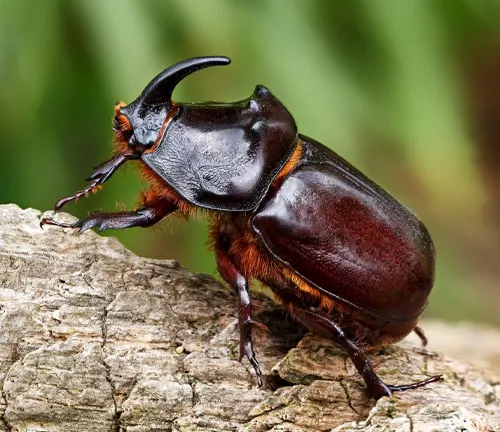
Mating rituals often involve fierce competitions between males, utilizing their horns to establish dominance. As larvae, they play vital roles in decomposition, while adults aid in pollination. Despite their ecological importance, certain species can become pests in agricultural settings, threatening crops like coconut palms. Beyond their ecological role, rhinoceros beetles hold cultural significance, featuring prominently in myths and folklore as symbols of strength and vitality. Conservation efforts are underway to protect these remarkable insects from habitat loss and other threats, ensuring their continued existence for generations to come.
| Specification | Description |
|---|---|
| Family | Scarabaeidae |
| Subfamily | Dynastinae |
| Size | 2 to 6 inches (5 to 15 centimeters) |
| Body Shape | Robust and elongated, resembling a rhinoceros |
| Exoskeleton | Thick and armor-like |
| Horns (Males) | Present, used in mating rituals and dominance |
| Coloration | Varied, often dark brown or black with patterns |
| Habitat | Tropical and subtropical forests, grasslands |
| Distribution | Worldwide, varying by species |
| Lifecycle | Complete metamorphosis: egg, larva, pupa, adult |
| Lifespan (Adults) | Several months to a year |
| Diet (Larvae) | Decaying wood and organic matter |
| Diet (Adults) | Fruits, sap, nectar from plants and trees |
| Economic Importance | Bred for insect fighting, larvae used as food |
| Cultural Significance | Symbols of strength, resilience, and protection |
| Conservation Status | Varies by species; some face threats from habitat loss and degradation |
Rhinoceros Beetle
Rhinoceros beetles are among the most fascinating insects in the world. Known for their distinct appearance and impressive strength, these beetles belong to the family Scarabaeidae, subfamily Dynastinae. With their unique horns and armor-like exoskeleton, they have captured the imagination of people across various cultures and continents.
Physical Characteristics
Size and Shape
Rhinoceros Beetles are known for their impressive size and distinctive shape. They typically range from 2 to 6 inches (5 to 15 centimeters) in length. Their bodies are robust and elongated, resembling the shape of a rhinoceros, which is how they derive their name. This shape aids in their ability to burrow and navigate through their environment efficiently. Additionally, their bodies are covered in a thick, armor-like exoskeleton, providing protection from predators and environmental hazards.
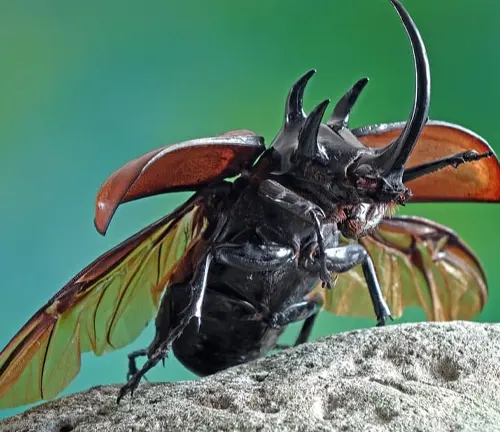

Horns and Armor
Both male and female Rhinoceros Beetles possess horns, although those of males are typically larger and more prominent. These horns are located on the head and are used primarily for mating rituals and territorial disputes. The size and shape of the horns can vary depending on the species, with some males boasting impressively large horns that can reach lengths of several inches. In addition to their horns, Rhinoceros Beetles have a thick exoskeleton that resembles armor. This tough outer shell provides further protection from predators and physical damage, allowing them to thrive in various environments.
Habitat and Distribution
Natural Habitat
Rhinoceros Beetles inhabit a variety of natural habitats, primarily tropical and subtropical regions around the world. They can be found in dense forests, grasslands, and even agricultural areas. These beetles are particularly abundant in areas with ample decaying organic matter, such as fallen logs, rotting vegetation, and compost piles. Their larvae, in particular, thrive in these environments, feeding on decaying wood and organic matter as they develop. Rhinoceros Beetles are also known to burrow into the soil to seek shelter and protection during certain stages of their life cycle.

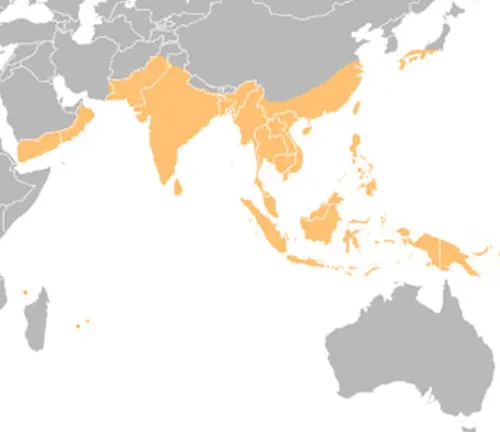
Geographic Distribution
Rhinoceros Beetles have a wide geographic distribution, with different species found in various regions across the globe. They are most commonly found in tropical and subtropical regions of Asia, Africa, and the Americas. Specific species may have more restricted ranges within these regions, depending on factors such as climate, habitat availability, and food sources. Some species, such as the Japanese Rhinoceros Beetle (Allomyrina dichotoma), are native to specific countries or islands, while others, like the Coconut Rhinoceros Beetle (Oryctes rhinoceros), have been introduced to new regions due to human activities such as trade and travel. Overall, Rhinoceros Beetles can be found in diverse habitats and ecosystems worldwide, playing important roles in their respective environments.
Life Cycle and Behavior
Lifecycle Stages
The lifecycle of a Rhinoceros Beetle consists of four main stages: egg, larva, pupa, and adult. It begins when a female beetle lays her eggs in decaying organic matter, such as rotting wood or compost. These eggs hatch into larvae, which are white, C-shaped grubs with distinct heads and six legs. Larvae spend the majority of their lifecycle feeding voraciously on decaying matter, growing larger and undergoing several molts as they develop. After reaching maturity, larvae enter the pupal stage, during which they undergo metamorphosis inside a cocoon or pupal chamber. Finally, adult beetles emerge from the pupal stage, ready to reproduce and continue the lifecycle.
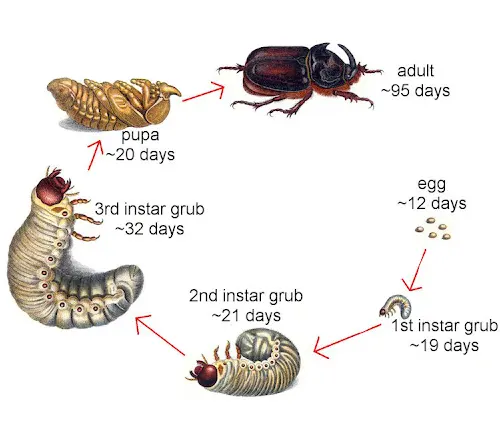
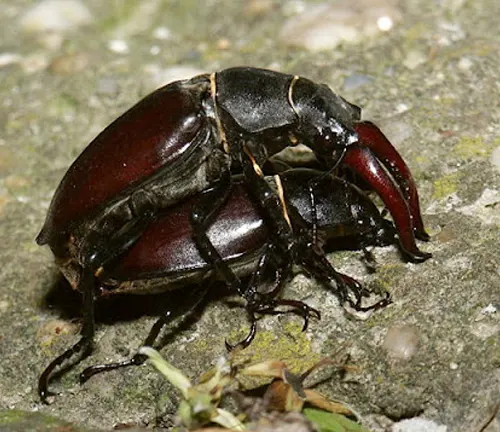
Mating Behavior
Mating rituals among Rhinoceros Beetles often involve fierce competitions between males for access to females. Male beetles use their horns, if present, to engage in combat with rivals and establish dominance. These battles can be intense, with beetles wrestling and pushing each other in attempts to gain the upper hand. Once a male successfully defeats its rivals, it approaches a receptive female and engages in courtship behavior, which may include various displays and signals to attract her attention. Once mating is successful, the female lays her eggs in a suitable substrate, and the lifecycle begins anew.
Feeding Habits
The feeding habits of Rhinoceros Beetles vary depending on their life stage. As larvae, they are voracious feeders, consuming large quantities of decaying wood and organic matter. This diet aids in the decomposition process and helps recycle nutrients back into the ecosystem. As adults, Rhinoceros Beetles have more varied diets, feeding on fruits, sap, and nectar from plants and trees. They are also known to visit flowers to feed on pollen and contribute to pollination. While some species may occasionally cause damage to crops or trees, particularly in agricultural settings, they generally play important roles as decomposers and pollinators in their natural habitats.
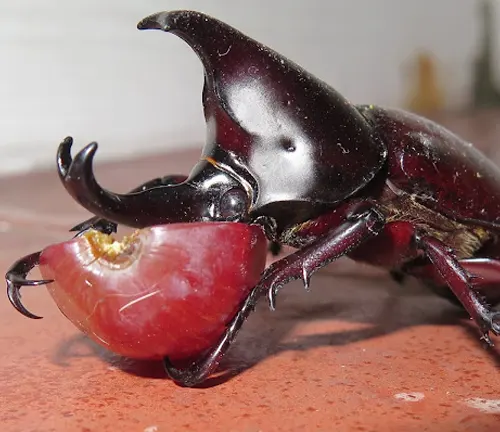
Ecological Importance
Role in Ecosystem
Rhinoceros Beetles play vital roles in their respective ecosystems, contributing to nutrient cycling and ecosystem balance. As larvae, they are important decomposers, feeding on decaying wood and organic matter. By breaking down dead plant material, they help recycle nutrients back into the soil, enriching it and supporting the growth of new plants. Additionally, the tunnels they create while burrowing can aerate the soil, promoting better drainage and root growth. As adults, Rhinoceros Beetles contribute to pollination by feeding on plant nectar and pollen. Their activities help maintain the health and diversity of plant communities, making them essential components of many ecosystems.
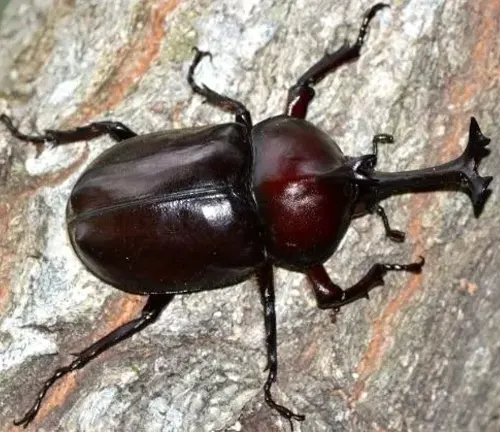
Impact on Environment
While Rhinoceros Beetles generally have positive impacts on their environment, certain species can become pests and have negative effects on agricultural and natural ecosystems. For example, the Coconut Rhinoceros Beetle (Oryctes rhinoceros) is a significant pest of coconut palms in some regions, where larvae bore into the trunks and roots, causing damage and sometimes killing the trees. Similarly, other species may feed on the roots of other crops or damage trees in forested areas. In large numbers, these beetles can disrupt ecosystem dynamics and threaten the health of plant populations.
Additionally, habitat loss and environmental degradation can further exacerbate the impacts of Rhinoceros Beetles on their environment, highlighting the need for conservation efforts to maintain balance and biodiversity.
Human Interaction and Cultural Significance
Symbolism and Mythology
Rhinoceros Beetles hold significant symbolism in various cultures and mythologies around the world. In many societies, they are seen as symbols of strength, resilience, and protection. Their impressive size and formidable appearance have inspired awe and admiration, leading to their portrayal in myths, folklore, and religious ceremonies. For example, in some cultures, Rhinoceros Beetles are believed to possess magical powers or to be guardians of the earth. They often appear in stories as creatures of great power and importance, representing qualities such as courage and endurance. Additionally, their distinctive horns and armor-like exoskeletons have made them symbols of valor and protection in many traditions.
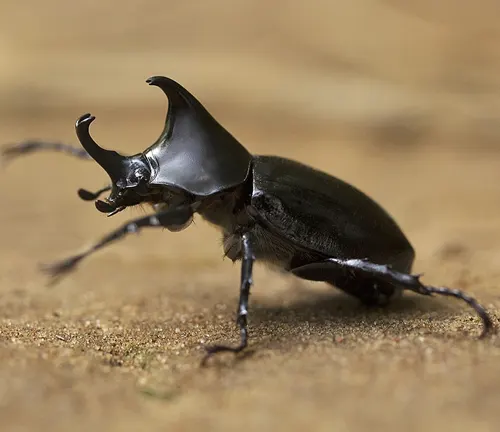
Economic Importance
Rhinoceros Beetles also hold economic significance in certain regions, where they are valued for various purposes. One of the most notable economic uses of Rhinoceros Beetles is in insect fighting, a popular form of entertainment and gambling in some Asian countries. Beetles, particularly males with impressive horns, are bred and trained for battles, where they compete against each other in contests of strength and dominance. Additionally, the larvae of some species are harvested and used as a protein-rich food source for humans and livestock in certain cultures. In agricultural settings, however, some species of Rhinoceros Beetles can be considered pests, causing damage to crops and trees. Overall, their economic importance varies depending on cultural practices and regional contexts.
Conservation Status
Threats to Population
Rhinoceros Beetles face several threats to their populations, primarily as a result of human activities and environmental changes. Habitat loss and fragmentation due to deforestation, urbanization, and agricultural expansion are significant threats to many species. Destruction of their natural habitats reduces the availability of suitable breeding sites and food sources, leading to declines in population numbers. Additionally, pollution and pesticides used in agriculture can have adverse effects on Rhinoceros Beetles and their habitats, further contributing to population declines. Climate change also poses a threat, altering temperature and precipitation patterns and affecting the availability of resources.
Conservation Efforts
Several conservation efforts are underway to protect Rhinoceros Beetle populations and their habitats. These efforts often focus on habitat restoration, including reforestation and creation of protected areas where beetles can thrive. Conservation organizations also work to raise awareness about the importance of Rhinoceros Beetles and the threats they face, advocating for sustainable land use practices and reduced pesticide use. In some cases, captive breeding and reintroduction programs are implemented to bolster populations of endangered species. Furthermore, research into the ecology and behavior of Rhinoceros Beetles helps inform conservation strategies and management plans aimed at ensuring their long-term survival.
By addressing the threats facing Rhinoceros Beetles and implementing effective conservation measures, we can work towards preserving these fascinating insects for future generations.
Different Species
Japanese Rhinoceros Beetle
(Allomyrina dichotoma)
Native to Japan, this species is known for its large size and distinctive horn shape. Males possess impressive horns used in mating competitions and territorial displays.

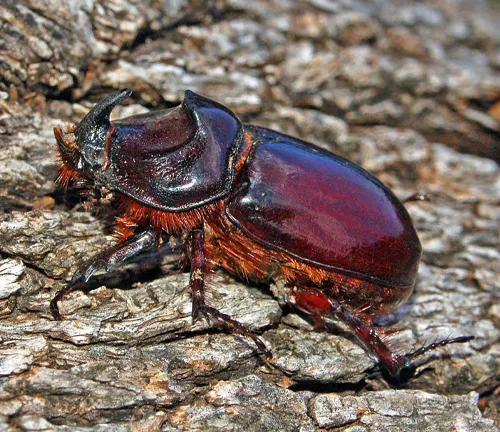
European Rhinoceros Beetle
(Oryctes nasicornis)
Found across Europe, these beetles are characterized by their reddish-brown coloration and relatively small horns. They inhabit various habitats, including forests and agricultural lands.
Coconut Rhinoceros Beetle
(Oryctes rhinoceros)
Native to Southeast Asia, this species is infamous for its destructive impact on coconut palms. Larvae feed on the roots of coconut trees, leading to significant damage and economic losses.
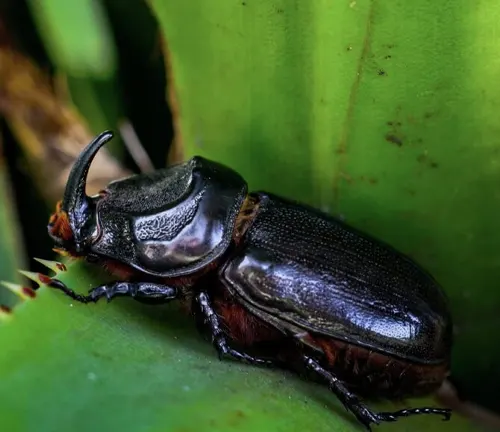
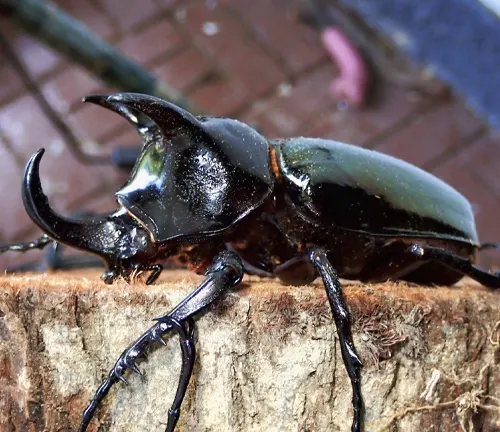
Atlas Beetle
(Chalcosoma atlas)
Native to Southeast Asia, particularly Indonesia, the Atlas Beetle is one of the largest species of rhinoceros beetles. Males boast impressive horns that can reach lengths of up to several inches.
Goliath Beetle
(Goliathus spp.)
Found in various countries across Africa, Goliath Beetles are among the largest insects in the world. Known for their vibrant colors and massive size, they are popular among insect enthusiasts.
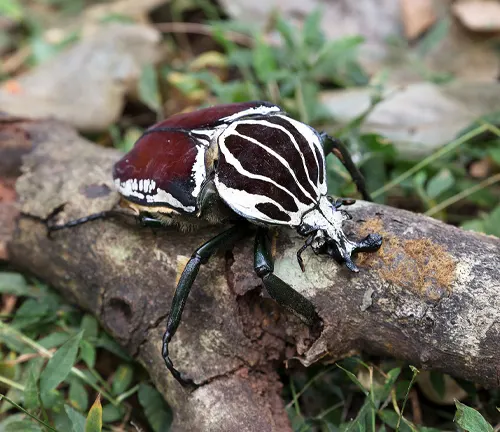
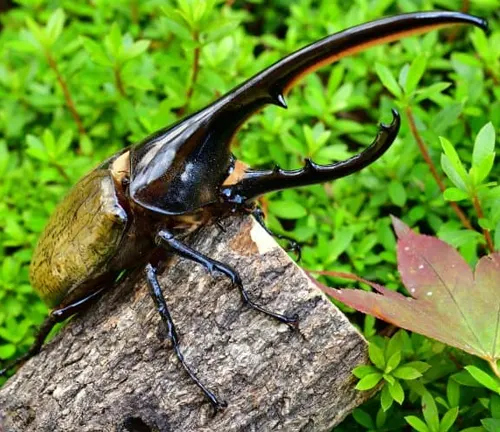
Hercules Beetle
(Dynastes hercules)
Native to Central and South America, the Hercules Beetle is renowned for its massive size and impressive horns. Males use their horns in combat and mating rituals, making them a sight to behold in the rainforests they inhabit.
Eastern Hercules Beetle
(Dynastes tityus)
Found in the eastern United States, these beetles are among the largest insects in North America. While not as large as some tropical species, they still boast impressive horns and are valued by collectors.
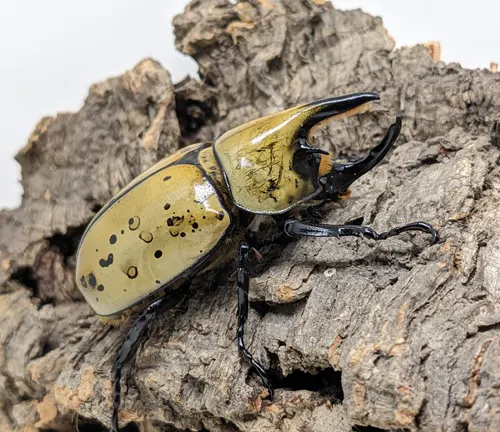
Frequently Asked Question (FAQs)
- What Are the Physical Characteristics of Rhinoceros Beetles?
Rhinoceros Beetles are characterized by their robust bodies, distinctive horns (present in males), and thick, armor-like exoskeletons. They typically range from 2 to 6 inches in length, with males being larger than females. - Where Are Rhinoceros Beetles Found?
Rhinoceros Beetles are found in various habitats worldwide, including tropical and subtropical forests, grasslands, and agricultural areas. Different species inhabit specific regions, with some being more widespread than others. - How Do Rhinoceros Beetles Reproduce?
Rhinoceros Beetles undergo complete metamorphosis, starting from eggs laid by females in decaying organic matter. After hatching, larvae undergo several stages of development, eventually pupating and emerging as adults capable of reproduction. - What Is the Economic Importance of Rhinoceros Beetles?
In some regions, Rhinoceros Beetles hold economic significance. They are bred for insect fighting, a popular form of entertainment and gambling in certain Asian countries. Additionally, their larvae are sometimes harvested as a protein-rich food source for humans and livestock. - How Do Rhinoceros Beetles Protect Themselves from Predators?
Rhinoceros Beetles rely on their thick exoskeletons and horns (in males) for protection against predators. Their tough outer shell acts as armor, while their horns can be used defensively in combat or to deter attackers. - What Is the Lifespan of Rhinoceros Beetles in Different Life Stages?
The lifespan of Rhinoceros Beetles varies depending on the species and environmental conditions. Larvae may spend several months to years developing before pupating, while adults typically live for several months to a year. - How Do Rhinoceros Beetles Interact with Their Environment?
Rhinoceros Beetles play important ecological roles, such as aiding in the decomposition of organic matter and pollinating plants. They also serve as food sources for various animals, contributing to the overall biodiversity of their habitats. - Are Rhinoceros Beetles Endangered?
While some species of Rhinoceros Beetles may face threats from habitat loss and environmental degradation, many are not considered endangered. Conservation efforts aim to protect their habitats and populations to ensure their long-term survival. - Can Rhinoceros Beetles Be Kept as Pets?
Yes, some enthusiasts keep Rhinoceros Beetles as pets, particularly certain species that are relatively easy to care for in captivity. However, it’s essential to research their specific care requirements and legal regulations before keeping them. - What Is the Cultural Significance of Rhinoceros Beetles?
Rhinoceros Beetles hold cultural significance in various societies, often appearing in myths, folklore, and religious ceremonies as symbols of strength, resilience, and protection. They are also sometimes featured in art and literature, reflecting their importance in human culture.


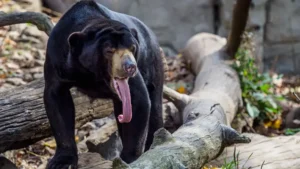



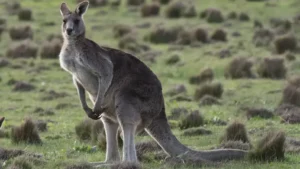
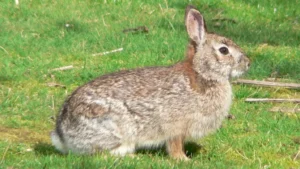
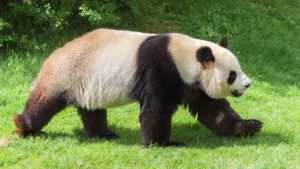
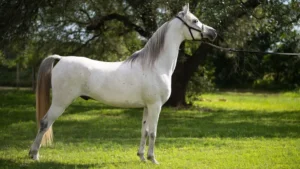
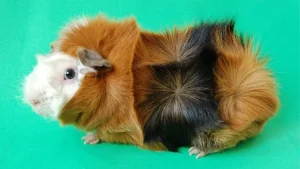
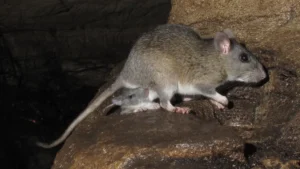

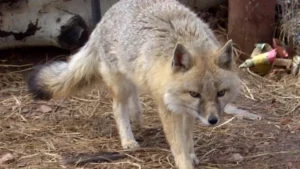
Leave your comment